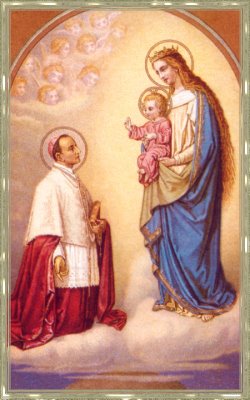 You might be asking yourself, "How did St. Charles Borromeo come to the Saint Paul Seminary School of Divinity" such that the Saint Paul Seminary School of Divinity and the Saint John Vianney Seminary would embark on a weekend dedicated to his patronage?
You might be asking yourself, "How did St. Charles Borromeo come to the Saint Paul Seminary School of Divinity" such that the Saint Paul Seminary School of Divinity and the Saint John Vianney Seminary would embark on a weekend dedicated to his patronage?
Under the inspiration of our rector, Msgr. Callaghan, and with the cooperation of Fr. Bill Baer, rector of SJV, the Borromeo Weekend was developed as a way to foster greater fraternity between the major seminary and the minor seminary though fellowship and various forms of prayer throughout the weekend. But how does St. Charles get involved?
Perhaps a look into the life of St. Charles is in order before we see how St. Charles came to the Saint Paul Seminary School of Divinity.
St. Charles Borromeo -- Archbishop of Milan and Cardinal-priest of the Title of St. Prassede, Papal Secretary of State under Pius IV, and one of the chief factors in the Catholic Counter-Reformation -- was born in the Castle of Arona, a town on the southern shore of the Lago Maggiore in Italy on 2 October, 1538; he died in Milan 3 November, 1584. His rise to the cardinalate was swift. The father of Charles, Count Gilberto Borromeo, married Margherita de Medici about 1530. Charles uncle, Margherita's younger brother named Giovanni Angelo, Cardial of Medici, was elected pope in 1559 and took the name Pius IV. Upon receiving the news of his uncle's election, Charles (who at this time was not more than 20 years old) hastened to Rome, whereupon he received the news that his uncle-pope had given him the charge of the adminstration of the Papal States. Along with this responsibility came Charles' elevation as a cardinal-deacon on January 31, 1560. In his role at the Secretary of State, Charles was influential in reconvening the Council of Trent, which had been suspended since 1552.
Charles worked dillegently throughout the remaining sessions of the Council. It was the death of his brother, Federigo, in 1562 that moved him towards greater spiritual discipline and towards priestly ordination, which was held in secret, by the hands of Cardinal Federigo Cesa, in Santa Maria Maggiore, on the 4th of September, 1563. He writes that he celebrated his first Mass on the Assumption, in St. Peter's, at the altar of the Confession. He said his second Mass at his house, attached to the Gesu, in an oratory where St. Ignatius had been accustomed to celebrate. Charles at this time had as his confessor Father Giovanni Battista Ribera, S.J. On the 7th of December, 1563, the feast of St. Ambrose, he was consecrated bishop in the Sistine Chapel; on the 23rd of March, 1564, he received the pallium, and was preconized on the 12th of May.
After the Council, Charles continued his diligent work, focusing his energy on clergy reform and formation of future clergy. As a well-seasoned bishop in Europe, his travels took him on a pastoral visit to a town in the Valtelline valley in the Grisons. Charles was met by the Marquis Gonzaga, whose twelve year old son, Aloysius (or Luigi), had reached great sanctity. This soon-to-be saint would receive his First Holy Communion by this other soon-to-be saint.
Thursday, November 09, 2006
St. Charles Borromeo comes to St. Paul (part 1)
Posted by
Stephen
at
11/09/2006 02:06:00 PM
![]()
Subscribe to:
Post Comments (Atom)


No comments:
Post a Comment
Note: Only a member of this blog may post a comment.